E-News Fall 2015
Founded in July 1987 Tile Heritage celebrates its 28th anniversary this year. Supporters like YOU... members, major contributors, industry sponsors, generous grantors... everyone... have made possible the continued fulfillment of the Foundation’s mission to Document and Preserve tile history in the U.S., both past and present. THANK YOU!
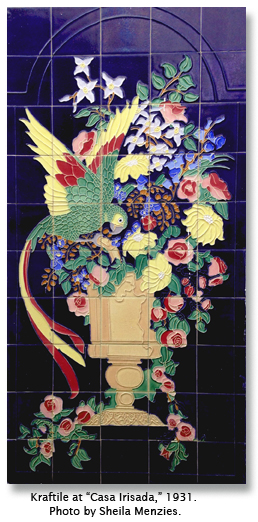
Here’s What’s Below
Casa Irisada: A Site to Behold
Albert Clay Myers: Inventor
“Can You Help Identify This?”
WACO Art Tile
Heath’s Tile Makes the Room
E-News Fall 2015 Print Version
by Joseph A. Taylor
Despite the shadow of the recent stock market crash in October of 1929, Albert Clay Myers and his soon-to-be new wife Adelaide* were moving ahead with their plans to build a handsome home for themselves using his company’s ceramic products. “Clay,” as he was called, then 40 years old with an adopted child,* had served as president and plant superintendent of Kraftile in Niles, California for four productive years and saw an opportunity to promote his company with what amounted to a “demonstration” home in the foothills not far from where he worked. The company featured the prospective palatial estate, ”Casa Irisada,” in a full-page color advertisement.
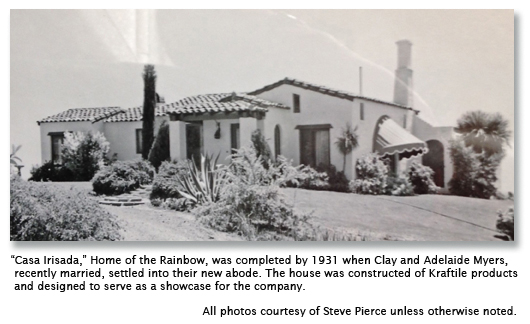
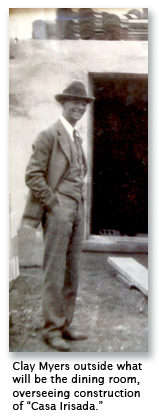
Distinguishing itself from other tile companies in the state, Kraftile produced a structural tile with a glazed finish, dubbed “Kraft-Enamel,” which was suitable for interior partitions and exterior curtain and load-bearing walls, basically combining hollow tile construction with a faience tile finish.
Exceptional quality was required and achieved with the company’s exclusive one-fire “monolithic” method where the tile’s body and enamel face were burned in one continuous fire at an extremely high temperature thus fusing the clay body with its glazed enamel finish. Tiles were also true to size and shape, entirely free from warps, cracks and checks. Masons found savings in labor and time installing this material, which would lay perfectly with a one-eighth inch joint.
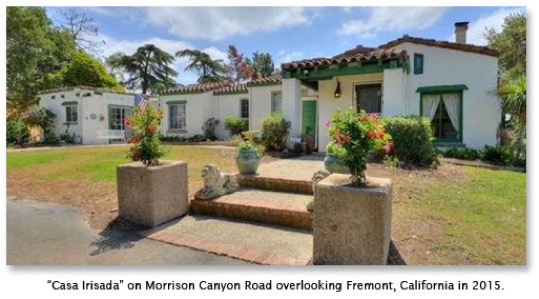
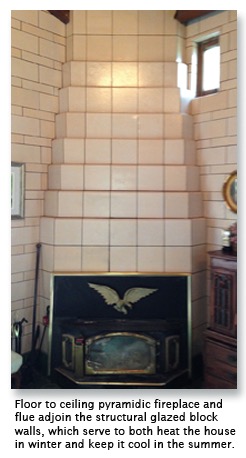
But times were changing. The stressful economic conditions brought on by the Great Depression took their toll. Clay Myers was relieved of his job as the company’s president in 1931, and he and Adelaide (now with two or three children*) chose to leave their new home not long thereafter.
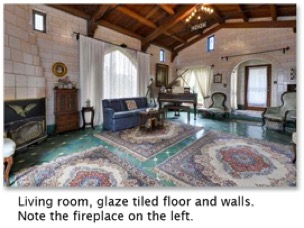
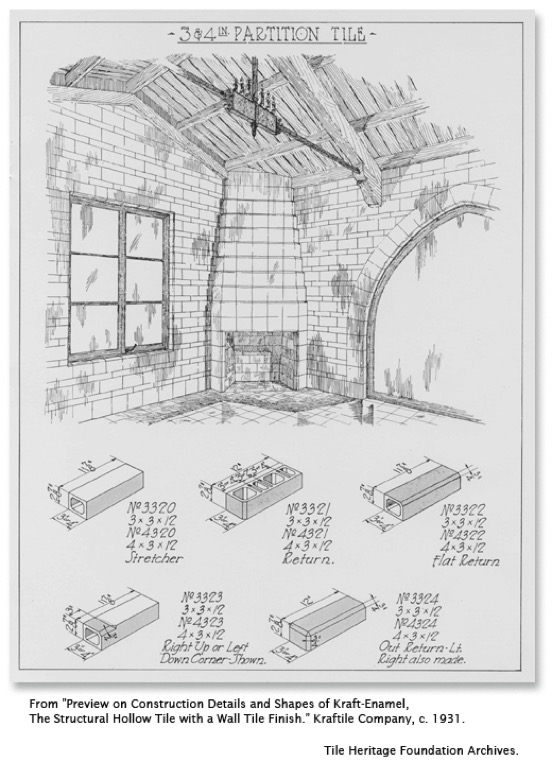
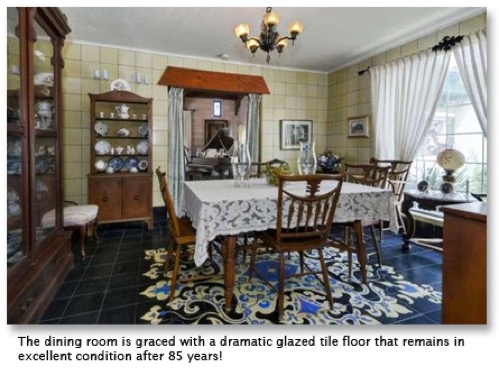
Despite its 85 years, the house today remains in remarkable condition. However, to live in this tiled environment, virtually surrounded by ceramic surfaces in every room, would require not only an affinity with the medium but a high degree of tile "nuttiness" as well! 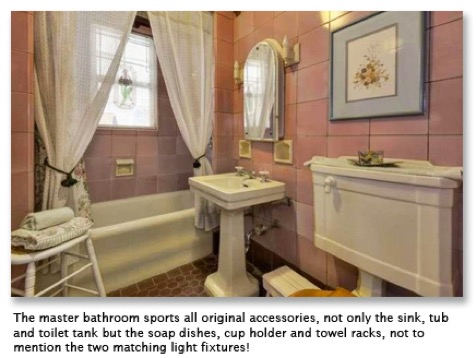
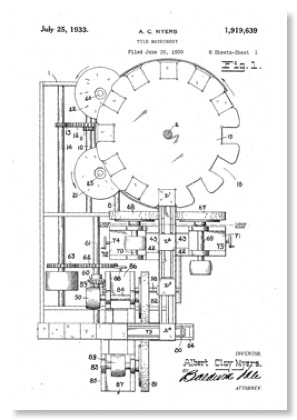
Albert Clay Myers: Inventor
While still serving as president of Kraftile Company, Clay Myers submitted a number of mechanical designs to the United States Patent Office in Washington, D.C., which Tile Heritage recently discovered online. The first, “Tile Machinery,” was filed on June 30, 1930 and approved three years later.
The objects of this invention were to simplify the method of producing tile and to lower the cost of production; to reduce the loss from breakage prior to the firing period; to produce a tile mechanically standardized as to thickness, lateral dimensions and edge bevel before glazing and firing; and to provide gaging, edging, and beveling machinery that would perform its functions on the unfired tile with accuracy and a minimum of breakage.
The 11-page patent consists of eleven figures (illustrations clearly numbered) and five additional pages describing in detail the numbered parts and procedures.
A pdf is available by clicking here (or by requesting a printed copy from Tile Heritage).
A second patent, “Tile Fabricating Machinery,” was filed on March 16, 1931 and approved two years later. The objects of this invention were to produce a structural tile unit uniform in three dimensions and suitable as an integer in the construction of building walls; to reduce the cost of production by minimizing the loss from breakage; and to provide dressing and gaging machinery capable of reducing unfired tile to a standard of accuracy in three dimensions of thickness, height and width, with a minimum of breakage.
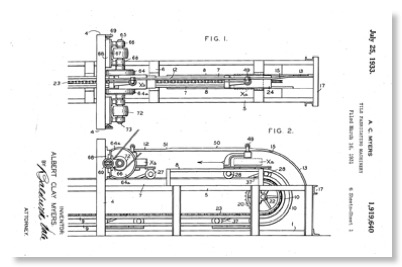
* Special thanks to Bonnie Montgomery and Dan Mosier for their research.
Fall 2015 E-News: PRINT VERSION

“Can You Help Identify This?”
It’s a familiar question here at Tile Heritage, people emailing, often without pictures, asking if we can identify a tile installation in their home or elsewhere in their community.
It’s always a challenge when we are emailed images and don’t immediately recognize what we’re looking at. Historic tile catalogs (there are hundreds in the Tile Heritage collection) can be a big help, but when no part of the installation appears in print, we’re often at a loss and have to rely on others’ expertise.
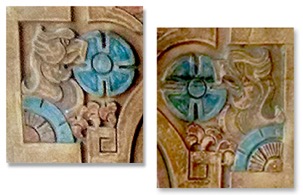
WACO ART TILE, produced by the Washington Brick Lime & Sewer Pipe Co., Clayton, Wash.
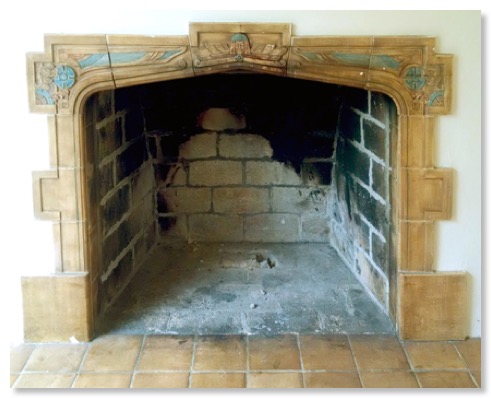
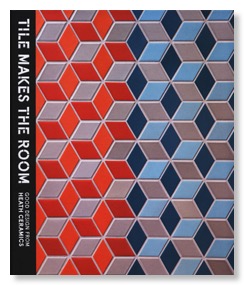
Good Design from Heath Ceramics
By Catherine Bailey and Robin Petravic
Ten Speed Press -Berkeley, 2015
Heath has been an integral part of California’s popular culture for nearly 70 years, principally in the Bay Area where Edith Heath’s studio, and later her factory, was located and where her ceramic products, her prized dinnerware and eventually her tiles, were in ever-increasing demand. The quality of her work, stylistically, appealed particularly to a select group of designers and architects, many representing prestigious firms throughout the United States and well beyond. The company did little if any advertising, yet its reputation grew handily by word-of-mouth.
Relieving the concerns of many that Heath Ceramics would close upon Edith’s death, the torch was passed successfully to Catherine Bailey and Robin Petravic in 2003 resulting in a resurgence of a ceramic tradition, the “flat” part of which is beautifully represented in this new publication: Tile Makes the Room. (Hard, textured cover, 256 pages. List price: $40.00)
The book is a journey, a guided tour of rooms, mostly residential, mostly in the U.S., but extending across both oceans to Europe and North Africa to the east, Japan to the west, Mexico and Brazil to the south, and Canada to the north. All of the 50+ rooms are tiled (about equally divided between Heath and other makers), yet the focus is shared with the numerous other features in each room. The tiles’ size, shape, color and texture affect the ambiance of the space as do the tiles’ location and the movement of light across the surface. Similarly, the paint and/or wallpaper, the cabinetry, fixtures and furniture, along with the selected art and assorted ornaments all play a role on each interior stage, blending into a coordinated and memorable design.
All professionally photographed, the rooms as a whole are spotlessly clean and unpeopled. The warmth comes largely from the darker tones and from the choice of a matte finish on the paper. An interesting exercise is to choose which of the rooms are most livable; another, which of the rooms, without peeking, are tiled with Heath (hint: think extended rectangle). With all the information provided in the Project Details, one is left wondering whose hands were involved in setting these marvelous ceramic surfaces.
Throughout the book the authors speak with one voice, write with one pen, so a reader does not get to hear either person individually. They do appear at their home and in their factory, but the book is not intended to be about them. Even so there is a natural urge to want to get to know the people who have chosen to make handmade tiles their life work.
Joseph A. Taylor
E-News: PRINT VERSION
Link to: E-News prior to 2010
JOIN TILE HERITAGE TODAY!
or . . . ![]()
TILE HERITAGE IS SPONSORED! - Click! SEE THEM HERE
